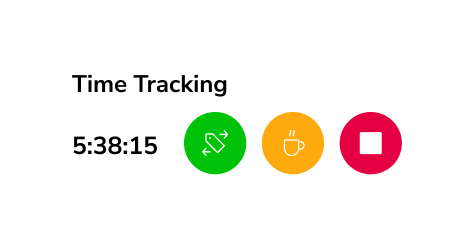Desktop vs. Web Time Tracking: Finding the Ideal Solution For You
Every company tracks time one way or another, whether it be through manual timesheets or more sophisticated time tracking tools. But how do you select the most suitable time tracking method that aligns with your preferences and needs?
Desktop time tracking makes use of specialized software that integrates into your computer’s desktop environment. It keeps track of and sorts the time you use for different tasks, projects, apps, or websites directly from your computer. It offers a range of features for those who want to combine time tracking with employee monitoring.
On the other hand, web time tracking works through a website on an internet browser and can be used on any device with internet access. It lets you access your time tracking data from different places, which is helpful for people who are often on the move.
In this article, I want to help you gain a clear understanding of the advantages and disadvantages of both methods to help you make an informed decision.
Time tracking plays a fundamental role in effectively managing time and increasing productivity. Some of the benefits of using time tracking tools include:
Understanding the right time tracking solution for your needs is crucial for effective productivity management. In this section, we’ll explore the advantages and limitations of both desktop time tracking.What Is the Significance of Using Time Tracking Software?
What Are the Key Differences Between Desktop and Web Time Tracking?
Feature
Desktop time tracking
Web time tracking
Accessibility
Limited to the specific device where the software is installed.
Accessible from any device with an internet connection.
Internet Dependency
Can work offline, independent of internet connectivity.
Requires a stable internet connection.
Cross-Platform Compatibility
Might only accommodate specific platforms (e.g., Windows, Mac, and Linux).
Works on various operating systems.
Performance
Typically offers better performance, as it’s optimized for local hardware.
May have some performance limitations due to browser-based operation.
Clocking In and Clocking Out
Ability to clock in and out without opening the browser, automatic time tracking.
Supports only web time tracking for tracking work hours.
Employee Monitoring Capabilities
May offer more comprehensive employee monitoring capabilities, including screenshots, mouse and keypad tracking, internet activity, and productivity levels.
Offers only basic employee monitoring features such as time tracking and attendance.
What Are the Advantages and Limitations of Desktop Time Tracking?
Advantages of Desktop Time Tracking
Limitations of Desktop Time Tracking
For real-life examples of recommended software, refer to The 8 Best Time Tracking Apps for Windows and The Top 8 Time Tracking Apps for Mac Users.
Time tracking tool can make a big difference in how smoothly your team operates. This section takes a closer look at web-based time trackers – what they do well, where they fall short, and whether they’re the right fit for your workflow.What Are the Advantages and Limitations of Web Time Tracking?
Advantages of Web Time Tracking
Limitations of Web Time Tracking
If browser-based solutions will be a better option for your organisation, have a look at our lineup of 6 Best Web Time Trackers.
Which One is Better: Desktop or Web Time Tracking?
Desktop and web time tracking offer their unique advantages. But the decision on which of these time tracking options you should be using will mainly depend on your specific work environment and preferences.
If you need more flexibility, web time tracking is the way to go. With web time tracking, you’ll be able to keep track of your time on virtually any internet-connected device.
However, if you often work offline or require tighter integration with desktop applications, desktop time tracking might be the better choice. Consider your workflow, work environment, and the tools you already use to make the best decision for your team’s productivity and efficiency.
Related Articles:
Complete Guide to Desktop Time Tracking
You Need This in Your Next Time Tracking Software
How to Upgrade Desktop Time Tracking with Integrations


